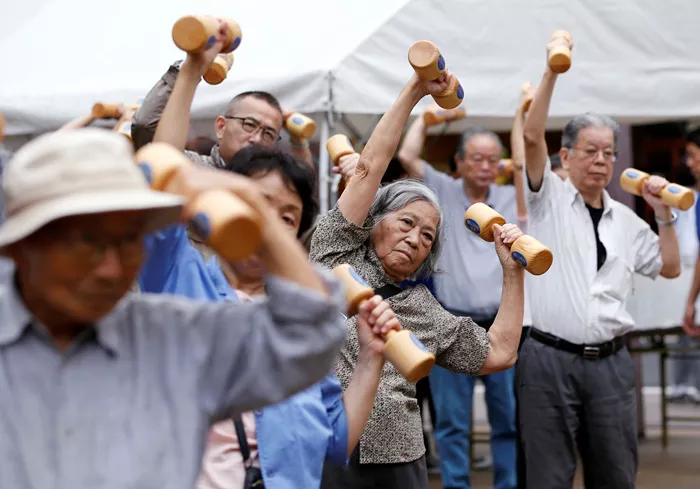Once a common sound in Japanese parks, the clack of plastic balls signaled the country’s seniors playing gateball, a croquet-like sport. In the 1990s, gateball reached peak popularity with nearly 2 million players. Today, however, the game’s popularity has sharply declined. The Japan Gateball Union now has just 35,000 registered members, down from a high of 680,000.
Several factors explain this drop. The sport’s strict team hierarchy and internal politics have discouraged participation. Also, gateball is increasingly seen as old-fashioned, often compared to shuffleboard tournaments on cruise ships.
The decline reflects not just culture but policy changes. The Japanese government promotes the idea of a “healthy lifespan.” This means not only living longer but living well and independently. Currently, healthy lifespan averages are 72.57 years for men and 75.45 years for women, with about 10 more years of life expected afterward. The government aims to raise this healthy lifespan to over 75 years for everyone by 2040.
This policy shift has led to more older adults joining fitness clubs. Renaissance, one of Japan’s largest gym chains, reports that 35% of its members are over 60. These seniors are not just walking on treadmills. Many are signing up for Pilates classes.
Pilates, once popular mainly among Instagram models and wellness influencers, is now favored by older adults. The number of Pilates studios in Japan has nearly tripled in recent years, growing from 600 to more than 1,700. Some say this trend is helped by athletes like Japan’s national rugby team. Others point to a more common issue: lower back pain.
Pilates was originally created to help injured veterans recover. It uses slow, controlled movements to strengthen muscles around the spine and pelvis. This makes it good not only for rugby players but also for elderly people. Reformers — special machines with springs and straps — help users gain stability without overdoing it. For those who cannot afford private sessions costing around ¥10,000, many gyms offer cheaper mat classes or leave equipment available for self-guided workouts. (Experts advise caution with unsupervised machine use.)
One of the fastest-growing Pilates chains, Zen Place, says about half of its clients are aged 50 or older. People over 60 make up 30 to 40% of this group. Urban Classic Pilates offers special discounts and shorter 30-minute sessions for people in their 60s, 70s, and 80s. Many seniors report feeling better than they have in years. One man in his 90s started Pilates at Zen Place after receiving a trial lesson as a Father’s Day gift more than ten years ago.
Scientific studies support these benefits. Pilates has been shown to improve bone density, sleep quality, and mental health. It also helps reduce pain in people with chronic lower back problems. Conditioning trainer Emi Motohashi writes in her book Athlete Pilates that Pilates strengthens deep core muscles around the spine and pelvis. This leads to better balance, fewer falls, less pain, and more independence.
In Tokyo’s Kodaira city, Pilates has even become part of municipal programs. In May, the city’s first Pilates workshop for seniors attracted over 80 applicants for only 11 spots. Winners were chosen by lottery. Many participants plan to continue meeting regularly after the eight-week course ends.
Not all aspects of the trend are perfect. Experts warn against unsupervised use of Pilates machines, which can cause injury if users do not maintain proper form and breathing. Pilates studios also vary widely in quality. Some offer excellent equipment and spacious rooms, while others lack key machines like the Cadillac or ladder barrel.
With a good instructor and proper support tools, Pilates is very adaptable for seniors. Motohashi suggests moving slowly, breaking exercises into small steps, and using props like small balls and ropes to assist. Having a professional nearby to monitor form and discomfort helps prevent injuries.
As a new Pilates participant and longtime yoga fan, I find it inspiring to watch gym members decades older than me mastering core exercises with smiles on their faces. Joseph Pilates, the method’s founder, once said, “In 10 sessions you’ll feel the difference, in 20 you’ll see the difference, and in 30 you’ll have a whole new body.”
Japan’s elderly may not gain entirely new bodies, but a longer period of good health is a gift we can all appreciate.

